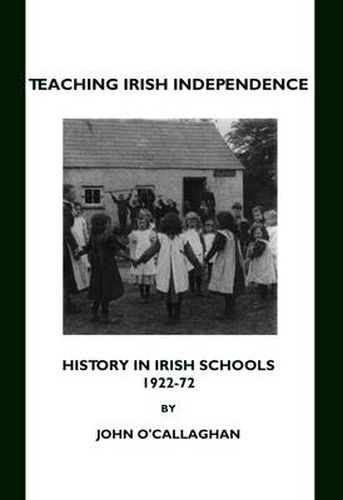Readings Newsletter
Become a Readings Member to make your shopping experience even easier.
Sign in or sign up for free!
You’re not far away from qualifying for FREE standard shipping within Australia
You’ve qualified for FREE standard shipping within Australia
The cart is loading…






This book examines the role of history teaching in Irish secondary schools in the period 1922-72. It assesses what objectives were the most important in history teaching and what interests school history was designed to serve. The emphasis is on the political, cultural, social and economic factors that determined the content of the history curriculum and its development. The primary focus is on the politics and policy of history teaching, including the respective contributions of church and state to the formulation of the history programmes. It is argued that a particular view of Ireland’s past as a Gaelic, Catholic-nationalist one informed the ideas of policy makers and thus provided the basis of state education policy, and history teaching specifically. The conclusion drawn is that history teaching was used by elite interest groups, namely the state and the church, in the service of their own interests. It was used to justify the state’s existence and employed as an instrument of religious education. History was exploited in the pursuit of the objectives of the cultural revival movement, being used to legitimise the restoration of Irish as a spoken language.
$9.00 standard shipping within Australia
FREE standard shipping within Australia for orders over $100.00
Express & International shipping calculated at checkout
Stock availability can be subject to change without notice. We recommend calling the shop or contacting our online team to check availability of low stock items. Please see our Shopping Online page for more details.
This book examines the role of history teaching in Irish secondary schools in the period 1922-72. It assesses what objectives were the most important in history teaching and what interests school history was designed to serve. The emphasis is on the political, cultural, social and economic factors that determined the content of the history curriculum and its development. The primary focus is on the politics and policy of history teaching, including the respective contributions of church and state to the formulation of the history programmes. It is argued that a particular view of Ireland’s past as a Gaelic, Catholic-nationalist one informed the ideas of policy makers and thus provided the basis of state education policy, and history teaching specifically. The conclusion drawn is that history teaching was used by elite interest groups, namely the state and the church, in the service of their own interests. It was used to justify the state’s existence and employed as an instrument of religious education. History was exploited in the pursuit of the objectives of the cultural revival movement, being used to legitimise the restoration of Irish as a spoken language.